this blog is dedicated to period dramas and history in general
Don't wanna be here? Send us removal request.
Text
Royal Wedding on 15 October 1913 at the Chapel Royal, St. James' Palace, London (part 1).
Prince Arthur of Connaught (30) and Princess Alexandra, Duchess of Fife (22).
The bridegroom was the only son of Prince Arthur, Duke of Connaught and his wife Princess Louise Margaret of Prussia.
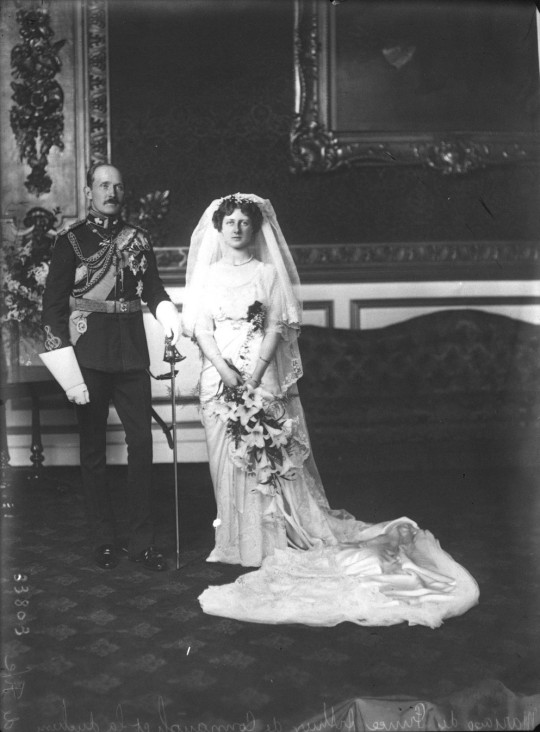
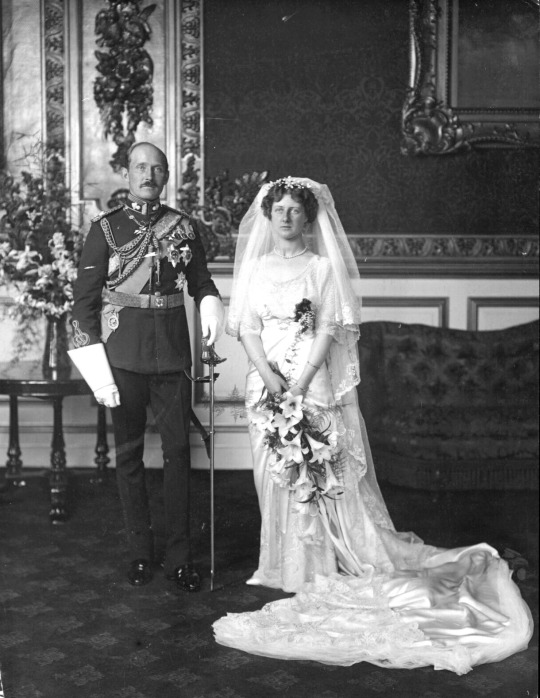
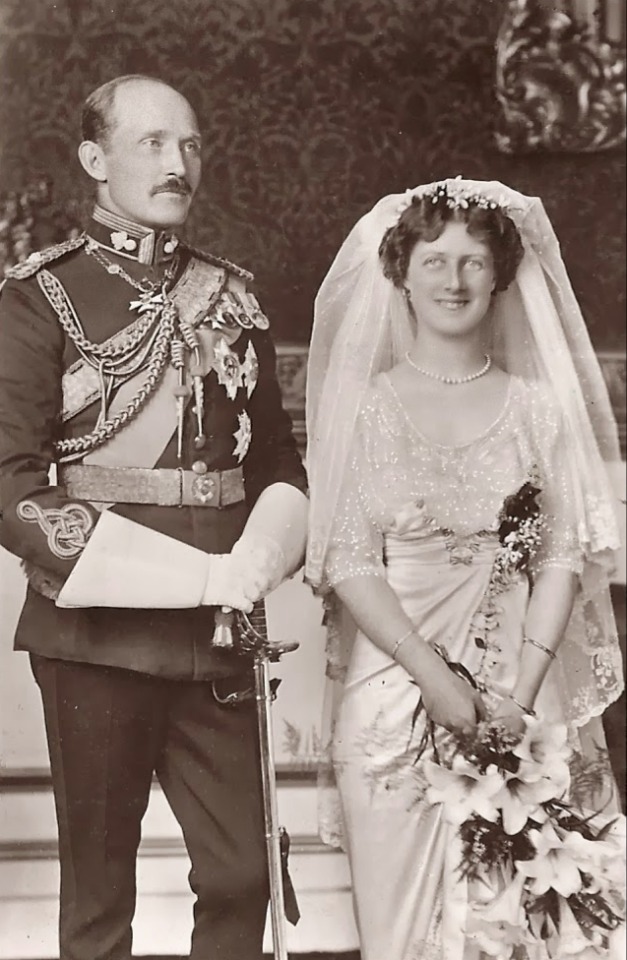
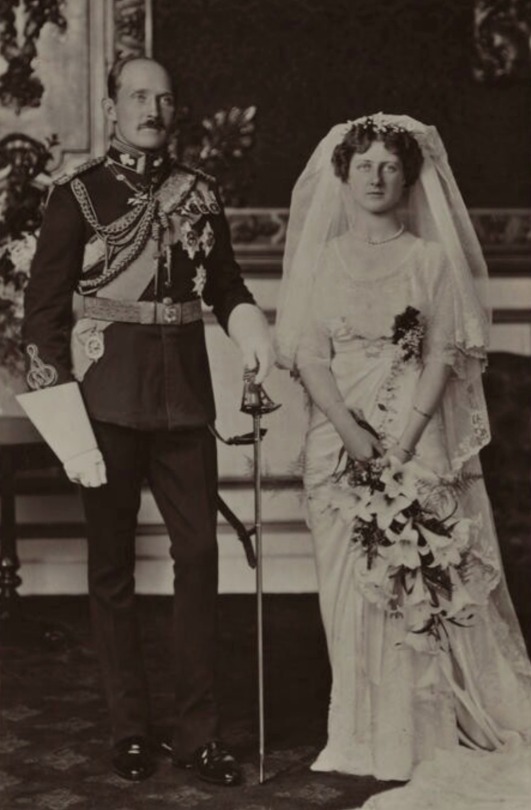
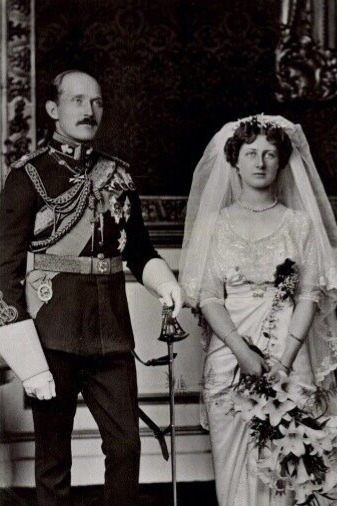
The bride was the eldest daughter of Alexander Duff, 1st Duke of Fife and his wife Louise Princess Royal.
Arthur was Princess Alexandra's first cousin once removed.
Sadly, her father passed away in 1912.
The Wedding dress and dresses designed for the wedding.
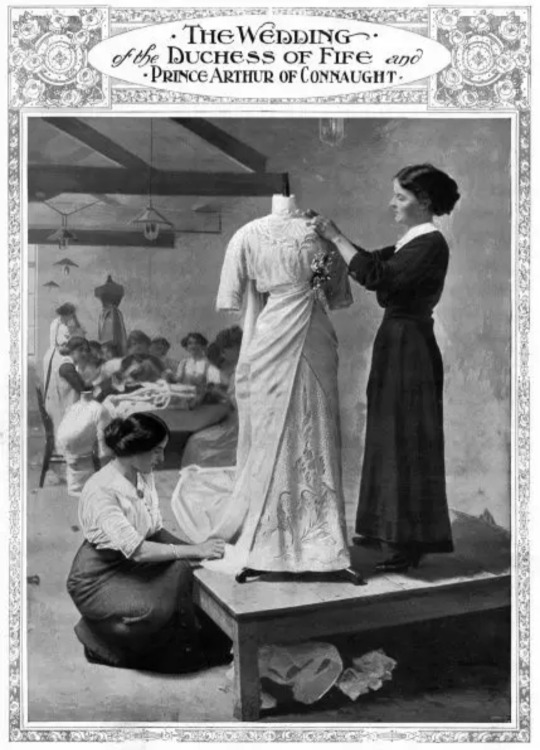
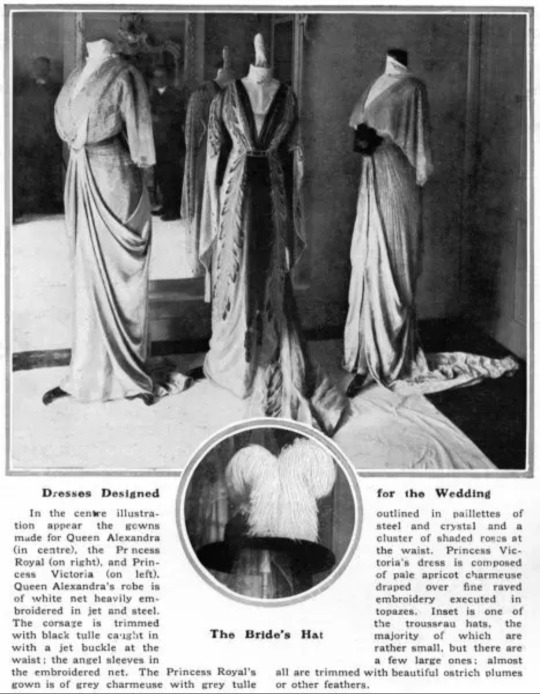
The bride leaving her London Home for the Chapel Royal.

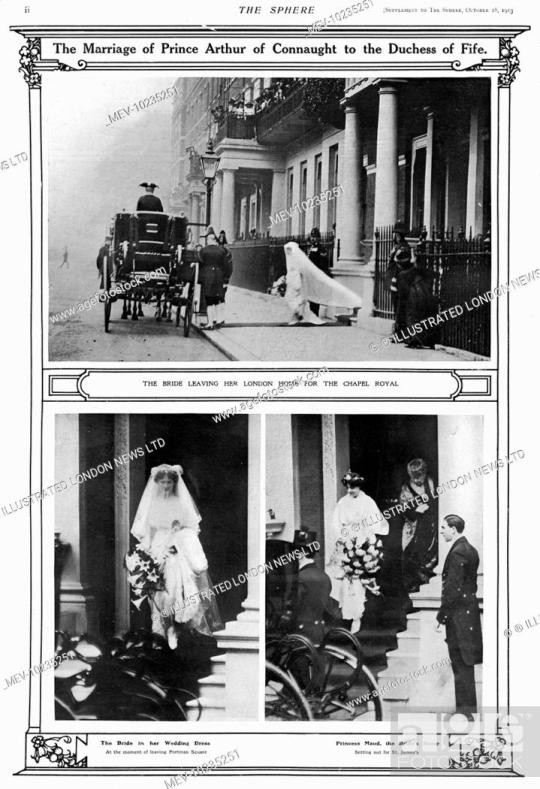
The bride's sister, Princess Maud of Fife, dressed as a bridesmaid for her sister's wedding, about to leave the house on Portman Square, on her way to Chapel Royal.
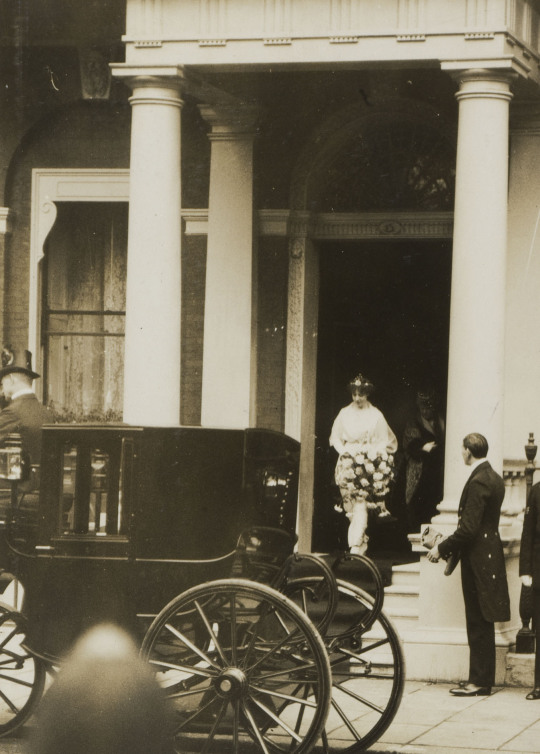
Source: Most of the photos are from the Royal Collection Trust.
32 notes
·
View notes
Photo







Babylon Berlin S3: Gereon Rath and Charlotte Ritter moments
972 notes
·
View notes
Photo


Olga Fyodorovna, Grand Duchess of Russia, Princess of Baden
68 notes
·
View notes
Text


Helena Bonham Carter as Queen Lady Jane Grey in Lady Jane (1986).
3 years before his death, Henry VIII made the Third Succession Act of 1544, which restored his daughters, Mary and Elizabeth, to the line of succession. Henry’s will stated that if none of his three children should have decadents, the throne would be passed to the heirs of his younger sister, Mary. Lady Jane Grey just happened to be the granddaughter of Mary Tudor.
In the summer of 1553, the 15 year old Edward VI knew he was dying. Knowing that when he shall die, his half sister Mary would ascended to throne, he decided to name his protestant cousin, Lady Jane Grey, as his successor instead. Edward wanted to ensure his protestant legacy, and Mary was a devout Roman Catholic.
3 days after the death of Edward VI, Jane was informed that she was now the Queen. There’s no doubt that she was probably surprised by this, and she even stated later that she accepted the crown with reluctance.
On July 10th of 1553, Jane was proclaimed Queen of England, France and Ireland. However, she refused to name her husband, Lord Guilford Dudley, as King. Instead, she only made him Duke of Clarence.
Jane’s time of royalty would not last long, though. As soon as Princess Mary heard of her brothers death, she began to rally supporters for her succession to the throne. There was a plan for troops to capture Mary, but the Privy Council switched their allegiance and proclaimed Mary as Queen.
Jane reigned for just 9 days, and has been given the title of the “Nine-Day Queen.” She is also the shortest reigning monarch in history. On July 19th of 1553, Jane was imprisoned in the Tower of London, as well as her husband. Princess Mary then ascended to the throne to become Queen Mary I.
Jane, her husband, her husbands two brothers, and Thomas Cranmer were all charged with high treason. The trial took place on November 13th of 1553, and all defendants were found guilty. It is likely that Jane would have not been executed if the rebellion of Thomas Wyatt the Younger didn’t happen, but fate seemed to have been going downhill for Jane, and quickly. Her sentence was to be “burned alive on Tower Hill or beheaded as the Queen pleases”.
On the morning of February 12th of 1554, Jane was taken to Tower Green for her execution, just after her husband. While upon the scaffold she gave this speech: “Good people, I am come hither to die, and by a law I am condemned to the same. The fact, indeed against the Queen’s highness was unlawful, and the consenting thereunto by me: but touching the procurement and desire thereof by me or on my behalf, I do wash my hands thereof in innocency, before God, and the face of you, good Christian people, this day.”
Jane then handed her gloves and handkerchief to her maid, and the executioner asked her for forgiveness, which she granted. She said to him, “I pray you dispatch me quickly.” She then asked, “Will you take it off before i lay me down?” The execution answered, “No, madam.” Jane blindfolded herself, but then failed to find the block with her hands. She cried out, “What shall I do? Where is it?” The Deputy Lieutenant of the Tower helped her find her way to it. Jane then laid her head on the block, speaking the words: “Lord, into thy hands I commend my spirit!”
Jane and her husband were buried in unmarked graves in the Chapel of St. Peter ad Vincula on the north side of Tower Green. She was just 16 or 17 years old when she died.
186 notes
·
View notes
Text


Helena Bonham Carter as Queen Lady Jane Grey in Lady Jane (1986).
3 years before his death, Henry VIII made the Third Succession Act of 1544, which restored his daughters, Mary and Elizabeth, to the line of succession. Henry’s will stated that if none of his three children should have decadents, the throne would be passed to the heirs of his younger sister, Mary. Lady Jane Grey just happened to be the granddaughter of Mary Tudor.
In the summer of 1553, the 15 year old Edward VI knew he was dying. Knowing that when he shall die, his half sister Mary would ascended to throne, he decided to name his protestant cousin, Lady Jane Grey, as his successor instead. Edward wanted to ensure his protestant legacy, and Mary was a devout Roman Catholic.
3 days after the death of Edward VI, Jane was informed that she was now the Queen. There’s no doubt that she was probably surprised by this, and she even stated later that she accepted the crown with reluctance.
On July 10th of 1553, Jane was proclaimed Queen of England, France and Ireland. However, she refused to name her husband, Lord Guilford Dudley, as King. Instead, she only made him Duke of Clarence.
Jane’s time of royalty would not last long, though. As soon as Princess Mary heard of her brothers death, she began to rally supporters for her succession to the throne. There was a plan for troops to capture Mary, but the Privy Council switched their allegiance and proclaimed Mary as Queen.
Jane reigned for just 9 days, and has been given the title of the “Nine-Day Queen.” She is also the shortest reigning monarch in history. On July 19th of 1553, Jane was imprisoned in the Tower of London, as well as her husband. Princess Mary then ascended to the throne to become Queen Mary I.
Jane, her husband, her husbands two brothers, and Thomas Cranmer were all charged with high treason. The trial took place on November 13th of 1553, and all defendants were found guilty. It is likely that Jane would have not been executed if the rebellion of Thomas Wyatt the Younger didn’t happen, but fate seemed to have been going downhill for Jane, and quickly. Her sentence was to be “burned alive on Tower Hill or beheaded as the Queen pleases”.
On the morning of February 12th of 1554, Jane was taken to Tower Green for her execution, just after her husband. While upon the scaffold she gave this speech: “Good people, I am come hither to die, and by a law I am condemned to the same. The fact, indeed against the Queen’s highness was unlawful, and the consenting thereunto by me: but touching the procurement and desire thereof by me or on my behalf, I do wash my hands thereof in innocency, before God, and the face of you, good Christian people, this day.”
Jane then handed her gloves and handkerchief to her maid, and the executioner asked her for forgiveness, which she granted. She said to him, “I pray you dispatch me quickly.” She then asked, “Will you take it off before i lay me down?” The execution answered, “No, madam.” Jane blindfolded herself, but then failed to find the block with her hands. She cried out, “What shall I do? Where is it?” The Deputy Lieutenant of the Tower helped her find her way to it. Jane then laid her head on the block, speaking the words: “Lord, into thy hands I commend my spirit!”
Jane and her husband were buried in unmarked graves in the Chapel of St. Peter ad Vincula on the north side of Tower Green. She was just 16 or 17 years old when she died.
186 notes
·
View notes
Photo






@historicwomendaily celebration week : day 2 of 3 favourite consorts → 6 Queen Consorts of Cyprus
209 notes
·
View notes
Photo




“Anne Askew was born in 1520 (some say 1521) in Lincolnshire. She was a noblewoman, being the daughter of Sir William Askew, and was well-educated. “ (x)
“As well as being known for her gospel preaching and death at the stake, Anne Askew is also famed for being the only recorded woman to have been tortured at the Tower of London. After being condemned to death, Anne Askew was taken to the Tower of London where she was subjected to torture on the rack at the hands of Gardiner’s right-hand men, Sir Richard Rich and Sir Thomas Wriothesley. Even though she had already been condemned to death, she was racked because Gardiner was determined to link Anne to the Queen’s friends, women like Catherine Brandon (Duchess of Suffolk), Anne Calthorpe (Countess of Suffolk) and Anne Stanhope (Lady Hertford), and Anne was refusing to name names during interrogations. On the 16th July 1546, Anne Askew, John Lascelles and two other Protestants were burned at the stake at Smithfield. Anne had to be carried to the stake on a chair because of her injuries from racking and the stake had a seat to support her body.” (x)
“Then Wriothesley, lord chancellor, sent to Anne Askew letters offering to her the King’s pardon if she would recant ; who. refusing once to look upon them, made this answer again, that she came not thither to deny her Lord and Master.” (x)
459 notes
·
View notes
Photo



Maria Callas in “Medea” Pier Paolo Pasolini 1969
13K notes
·
View notes
Text

FORGOTTEN BY HISTORY: Mariana Victoria of Portugal
Mariana Vitória Josefa Francisca Xavier de Paula Antonietta Joana Domingas Gabriela was born on 15 December 1768 as a daughter of Queen Maria I of Portugal “The Mad” and her uncle-husband, Pedro III of Portugal. She was named after her grandmother, Mariana Victoria of Spain. In 1785, she married in double political alliance, Infante Gabriel of Spain, the most talented of Charles III’s sons. In exchange, her brother, John, took Gabriel’s niece, Carlota Joaquina of Spain as his wife. Sweet, inteligent Mariana quickly became favourite daughter-in-law of Charles III. Her sister-in-law, Maria Luisa of Parma said that Charles “cares about nobody but the Portuguese”. She had 3 children with Gabriel, but only the oldest, Pedro Carlos survived to adulthood. In November 1788, she contracted smallpox among with her husband and newborn son, Charles Joseph. She died on 2 November 1788, only few days after labour. Both her son and husband followed soon after.
She was only 19 years old.
9 notes
·
View notes
Text

FORGOTTEN BY HISTORY: Caroline of Parma
Caroline Maria Teresa Giuseppina was born on 22 November 1770 in Parma, as the first child of Ferdinand I of Parma and his formidable wife, Maria Amalia of Austria. She grew up in happy environment, brought up mainly by her father. Her education was rigid and religious. Marriage of her parents was somehow problematic - Ferdinand had never measure up to Maria Amalia’s high expectations and later handed control over duchy to his more competent Austrian wife, who acted independently, far from Empress Maria Teresa’s commands. Carolina was close to her younger brother, Louis, who suffered from epilepsy. By all accounts, Carolina was beautiful, but also timid and painfully shy . Despite her being introvert, Carolina was pretentious and dominant towards her younger sisters - Maria Anna and Maria Antonia. She used to make fun of them, but later, she proved to sweet and loving sibling. She also had very deep relationship with her parents.
Maria Amalia had high hopes for her daughter and wanted her to marry into one of many German dynasties. Around 1790, she met her future husband, Maximilian of Saxony. Since Maximilian was the third son of his parents, he initially had no chance to inherit Saxon throne. Maria Amalia preferred Carolina to marry more significant prince, but seeing that Maximilian and her daughter were deeply in love with one another, she gave her consent. Their marriage was happy and harmious. They had 7 children, including 2 Kings of Saxony, 2 Duchess of Tuscany and Queen of Spain. Alas, constant pregnancies and stress strained her frail health - she was never to recover from birth of her last daughter, Maria Josepha Amalia in December 1803. She died from flu and fever, weakened by labour, on 1 March 1804
40 notes
·
View notes
Text
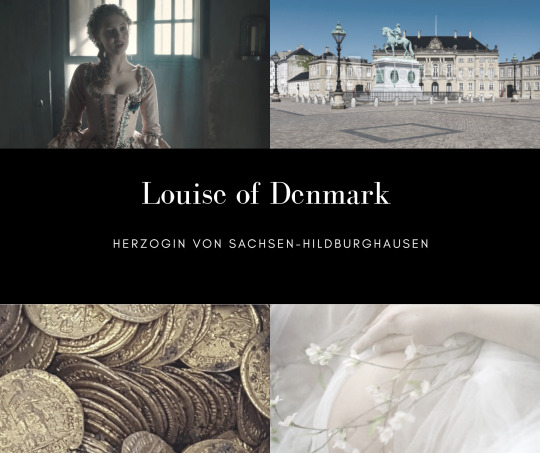
FORGOTTEN BY HISTORY: Louise of Denmark (1726-1756)
She was born on 19 October 1726, as the second surviving child of King Christian VI of Denmark, and his wife, Sophia Magdalena of Brandenburg- Kulmbach. Lively, confident Louise didn’t suit to religious and rigid picture of Christian VI’s family. She disliked the strict customs of Danish court, that led to her father’s complaints about her “rebellious nature”.
Among her marriage prospects were: George II of Great Britain’s younger son, William Augustus, Prince of Zweibrücken-Birkenfeld and Duke of Mecklemburg. None of those plans came to fruition, as she started relationship with court valet de chambre, from Ahlefeldt family, that possible resulted in child. Her liver was sentenced to imprisonment for his audacity in Munkholm Fortress. Louise was engaged hastily to Ernst Frederick III of Saxe- Hildburghausen, with large dowry to mute scandal. 6 years after marriage, she gave birth to a daughter, Fredericka Sophie Juliane Caroline. Sadly, newborn infant died after a month. As Duchess, she hosted court parties, followed strict etiquette, amusing herself with balls, hunting, gambling. She died soon after her child, on 8 August 1756.
Her husband remarried 2 times and fathered 1 son and 3 daugthers.
4 notes
·
View notes
Text

FORGOTTEN BY HISTORY: Caroline Mariane of Mecklemburg-Strelitz
She was the third child of George, Duke of Mecklemburg-Strelitz, and his wife, Marie of Hesse-Kassel. Little is known about her childhood, but generally, she was brought up in genuine and friendly environment. Mecklemburg-Strelitz was a small, insignificant German country, that faced many economical problems in XIX century. Due to her father’s educational interests, Caroline proved to be an excellent student, especially in languages.
In 1837, Prince Frederick of Denmark, divorced his first wife, Vilhelime Marie of Denmark, and sought for new and fertile wife. His relationship with Vilhelmine Marie ended in scandal - he was far from being a decent husband. His lust for women, sex and drinking was well-known among his Danish subjects. His choice fell on Princess of Mecklemburg- Strelitz, probably, because her dynasty was endowned with huge fertility and he, silently, excepted her to accept his numerous extramatrial affairs. Frederick put also her knowledge of Danish language in favour of marriage.
They exchanged vows on 10 June 1841. From the very beginning, their relationship proved to be unhappy one, mainly due to Frederick’s extenssive drinking, womanzing. From Caroline’s side, her only fault was her shy and timid temperament - she didn’t exert any influence on rebellious husband.
In 1844, after visit in Neustrelitz, she refused to go back to Denmark. 2 years later, they divorced and Frederick remarried to Louise Rasmussen, his former lover. Having retained her title, Caroline drew back to Neustrelitz. She ceased to talk about her former husband, but when finally she opened up, her only words about him were: “He was much too bizarre!”
She died on 1 June 1876 in Neustrelitz
6 notes
·
View notes
Photo

FORGOTTEN BY HISTORY: Maria Amalia of Spain
Maria Amalia of Spain was born on 9th January 1779 in Madrid, Spain as the second surviving daughter of Charles IV of Spain and his wife, Maria Luisa of Parma.
When she turned 15, her mother was quick to arrage her marriage with Prince Louis of Parma, who had just entered Spanish land to complete his education. In contrast to Maria Amalia, he was endowned with extraordinary charm and handsome face. Louis later turned his attention to his bride’s younger sister, Maria Luisa, probably the most beautiful and witty out of their parents’ children. Too shy and plain, Maria Amalia was forced to accept unexcepted change and marry in a hurry, her uncle, Antonio Pascual of Spain, who remarkably resembled her father - as there had been no other marriage proposals from European royal courts. By all accounts, marriage was rather unhappy for both sides - Antonio was man of limited inteligence, who didn’t share any interests with his young bride. To highlight Maria Amalia’s bad situation, I would say, that she was married to Antonio in double ceremony, with her sister being married to her former fiance. Resigned to her fate, she got pregnant in October 1797. On 20 July 1798, labour started. But it soon became known that she was about to die in delivery, as baby had gotten stuck in the birth canal. 2 days later, doctors intervened, but baby boy was found dead. By the time she contracted labour infection and died in agony. She was only 19 years old
8 notes
·
View notes
Photo



My dearest Emma. For dearest you will always be, my dearest, most beloved Emma, tell me at once. I cannot make speeches. If I… if I loved you less, I might be able to talk about it more.
2K notes
·
View notes
Text
Miss Lilian Wilson
This post is dedicated to Miss Lilian Wilson, Elisabeth’s nanny, who devoted 8 years of her life to love and comfort her little charge.

Elizabeth Jane “Lilian” Wilson was born in Northamptonshire (England) on 20 April 1864. Lilian’s father Edward Wilson was a railway porter. Lilian’s mother Emma Powell died while she was still a small child. Edward returned to his native London with his children and he remarried at that time.
Lilian Wilson found her position with royalty by personal recommendation. She arrived in Darmstadt to take up the position on her thirty–first birthday, 20 April 1895, when Princess Elisabeth of Hesse was about just over a month old: the connection between nurse and child was immediate and absolute.
Miss Wilson adored her little charge who seemed to have been a very special child. Glimpses of Elisabeth and Lilian Wilson abound in Meriel Buchanan’s writings. Meriel’s father was the British Chargé d’Affaires in Darmstadt until the autumn of 1900. For the first five years of Elisabeth’s life, Meriel spent most of her summer days with the little Princess and with Miss Wilson, who Meriel described as “a capable, fresh-faced woman in her white piqué dresses, possessed of endless patience and a warm, kindly heart, in spite of her occasional sharp reprimands, which were no doubt fully deserved”.
Lilian was warm and placid, happy to immerse herself in the nursery and its small doings. She became very good friend with Margaretta Eagar, Elisabeth’s Russian cousins’ nanny. In fact, caring for children who were cousins, and whose parents were close, Lilian and Margaretta met on several occasions; not frequently, but when they were together it was for weeks at a time and they became friends.
We know little Elisabeth adored Lilian, and the nurse adored her back. In fact, after Elisabeth’s parents’ divorce, when it was agreed that little Elisabeth would spend half of each year with her mother, half with her father, it was Lilian who had the job of taking the little girl from one parent to the other, of staying with her and becoming her stability in an atmosphere of deepening bitterness. However, she was caught up in her employers’ marital problems and she almost came to a violent end. The following incident happened in February 1902, while Lilian and Elisabeth were staying with Grand Duchess Victoria Melita and Elisabeth’s maternal Grandmother, Marie Alexandrovna, and it was described by the latter in a letter to her eldest daughter Marie of Romania.
“She (Victoria Melita) gave me a terrible fright about a week ago, as she went into a shameful fit of unbounded fury against Wilson about some letter from Darmstadt, mentioning her jewels. She began to scream in such a way that actually the whole of the servants rushed upstairs.
She slapped Wilson and tore at her hair and made a dart at a big lamp to throw it at her head. Wilson just had time to seize it and carry it out of the room. Frightened maids rushed into my room to fetch me as the saving angel and I found her crying, but the first fury over Everybody was trembling and quite pale… You know that she could have killed Wilson with the greatest ease.”
This event, among others, makes Lilian Wilson’s loyalty to the Grand Duke, and his child’s feelings, very easy to understand. Lilian accompanied Elisabeth during her tragic latest hours, on the 16 November, 1903. Tsar Nicholas II described how during her last minutes, “the little girl was lying on her side and with her big eyes looking at her nursemaid’s face… everything ended silently and imperceptibly”. When Lilian knelt at the deathbed of little Elisabeth, Grand Duke Ernst Ludwig comforted her. For Lilian, who had endured the unimaginable at her employer’s side, the grief bound her to Darmstadt for ever. She stayed on with the Grand Duke though she had no more children to nurse.
Two years later, when Ernst Ludwig became a father once again with the birth of Georg Donatus, the nurse could only be Lilian Wilson. She nursed little “Georgie” as she used to call him, until September 1908, when she left the nursery after 13 years to marry Willhelm Scharmann, an accountant in the Grand Duke’s treasury. In 1919 she and Willhelm moved into a house on the Bessunger Strasse in Darmstadt. The city records contain no further mention of Lilian, though Willhelm lived there until the 1940’s.
Sources: From Cradle to Crown (Thank you Charlotte Zeepvat for your research and for writing this nice book)
I could not find any picture of Lilian with Elisabeth. Hovewer, I found some of her with Elisabeth’s brother Georg Donatus in the Hessian State Archives, Lilian Wilson is identified as “Nana Scharman” (her husband’s surname):
1907:

1908:



27 notes
·
View notes
Text
Please, take a moment to read this text.
Today I want to share with you something very crucial that happened in my country.
Yesterday (May 15, 2020) in Poland a pro-life (anti-choice) activist Zuzanna Wiewiórka was honored with a medal of justice.

(”Stop hate for life defenders”)
She have been harassing a seventeen years old girl, who wanted to have an abortion due to risk of death. The teenager was seeking help online and she was found by the activist, who stalked, blackmailed and sent her pictures of aborted babies.
Moreover this is not Wiewiórka’s first action like that.
The girl refused changing her mind about abortion, but the activist was unstoppable and got information (most likely illegaly) about her child’s father and her family in order to tell them about young girl’s plans. The family locked her at home and she is apparently struggling with side effects of a failed abortion made with non-medical tools.
Zuzanna Wiewiórka also said that “Blowing up clinics offering abortions is a good way to prevent murder and killing doctors who provide abortions is crucial to stop killing innocent”.
What’s more Zuzanna’s brother Maciej Wiewiórka supports his sister. He said that “Sometimes rape is the only chance for a man to have sex”. I do not even know how to comment that I will leave you with that.
How could someone who technically took away that young girl’s life get a prize for saving a life? How is she called a hero?

I wanted to mention that anti-choice activist try to take advantage of epidemy and lockdown that makes strikes impossible. Their actions do not seem like life saving at all.
I am shaking right now. I cannot even imagine how the poor teenager must be feeling. I definitely do not want to live in a world like that.
Please share! Spread the news, we have to resist this madness.
21K notes
·
View notes
Photo




COSTUME APPRECIATION Mahidevran’s Purple Travelling Ensemble
113 notes
·
View notes